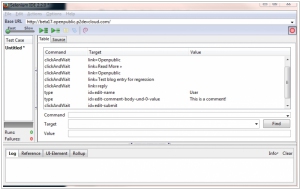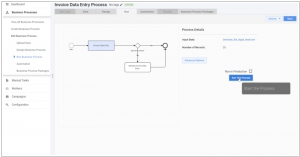Selenium vs WorkFusion
June 12, 2023 | Author: Michael Stromann
Selenium and WorkFusion are both widely used automation tools but serve different purposes and have distinct differences. Here are the key differences between Selenium and WorkFusion:
1. Functionality and Scope: Selenium is primarily a web application testing framework that allows developers to automate web browsers for testing purposes. It provides a set of APIs and libraries that enable the creation of test scripts for automating interactions with web elements, form submissions, and navigation. WorkFusion, on the other hand, is an intelligent automation platform that combines robotic process automation (RPA) with artificial intelligence (AI) and machine learning (ML). It focuses on automating end-to-end business processes that involve data-intensive tasks, cognitive decision-making, and integration with multiple systems.
2. Test Automation vs. Process Automation: Selenium is widely used for automating web application testing, particularly functional and regression testing. It enables the creation of test scripts that mimic user interactions with web elements and verify expected outcomes. WorkFusion, on the other hand, is designed for process automation across various business functions. It allows organizations to automate complex workflows that involve data extraction, document processing, data validation, and integration with enterprise systems.
3. Technical Expertise and Learning Curve: Selenium is a popular choice among developers and requires programming knowledge, primarily in languages such as Java, Python, or C#. It provides a range of APIs and libraries that require understanding and proficiency in web development technologies. WorkFusion, on the other hand, offers a more user-friendly interface and low-code capabilities that enable business users to build automation workflows without extensive programming knowledge. However, leveraging advanced capabilities such as AI and ML in WorkFusion may require additional technical expertise.
4. Extensibility and Ecosystem: Selenium has a large and active community of developers, which has contributed to a wide range of third-party plugins, extensions, and integrations. It integrates well with other testing frameworks, tools, and frameworks in the software development ecosystem. WorkFusion, on the other hand, provides an integrated platform that combines RPA, AI, and ML capabilities. It has its own set of built-in features and tools for process automation, data extraction, document understanding, and integration with enterprise systems.
5. Industry Adoption and Use Cases: Selenium is widely used across industries for web application testing and is a popular choice for quality assurance and software development teams. It is suitable for organizations that primarily focus on testing and quality assurance needs. WorkFusion, on the other hand, is targeted towards organizations seeking end-to-end business process automation across various functions, including finance, operations, and customer service. It is applicable in industries where data-intensive processes and cognitive decision-making are prominent, such as banking, insurance, and supply chain management.
See also: Top 10 RPA Software
1. Functionality and Scope: Selenium is primarily a web application testing framework that allows developers to automate web browsers for testing purposes. It provides a set of APIs and libraries that enable the creation of test scripts for automating interactions with web elements, form submissions, and navigation. WorkFusion, on the other hand, is an intelligent automation platform that combines robotic process automation (RPA) with artificial intelligence (AI) and machine learning (ML). It focuses on automating end-to-end business processes that involve data-intensive tasks, cognitive decision-making, and integration with multiple systems.
2. Test Automation vs. Process Automation: Selenium is widely used for automating web application testing, particularly functional and regression testing. It enables the creation of test scripts that mimic user interactions with web elements and verify expected outcomes. WorkFusion, on the other hand, is designed for process automation across various business functions. It allows organizations to automate complex workflows that involve data extraction, document processing, data validation, and integration with enterprise systems.
3. Technical Expertise and Learning Curve: Selenium is a popular choice among developers and requires programming knowledge, primarily in languages such as Java, Python, or C#. It provides a range of APIs and libraries that require understanding and proficiency in web development technologies. WorkFusion, on the other hand, offers a more user-friendly interface and low-code capabilities that enable business users to build automation workflows without extensive programming knowledge. However, leveraging advanced capabilities such as AI and ML in WorkFusion may require additional technical expertise.
4. Extensibility and Ecosystem: Selenium has a large and active community of developers, which has contributed to a wide range of third-party plugins, extensions, and integrations. It integrates well with other testing frameworks, tools, and frameworks in the software development ecosystem. WorkFusion, on the other hand, provides an integrated platform that combines RPA, AI, and ML capabilities. It has its own set of built-in features and tools for process automation, data extraction, document understanding, and integration with enterprise systems.
5. Industry Adoption and Use Cases: Selenium is widely used across industries for web application testing and is a popular choice for quality assurance and software development teams. It is suitable for organizations that primarily focus on testing and quality assurance needs. WorkFusion, on the other hand, is targeted towards organizations seeking end-to-end business process automation across various functions, including finance, operations, and customer service. It is applicable in industries where data-intensive processes and cognitive decision-making are prominent, such as banking, insurance, and supply chain management.
See also: Top 10 RPA Software




